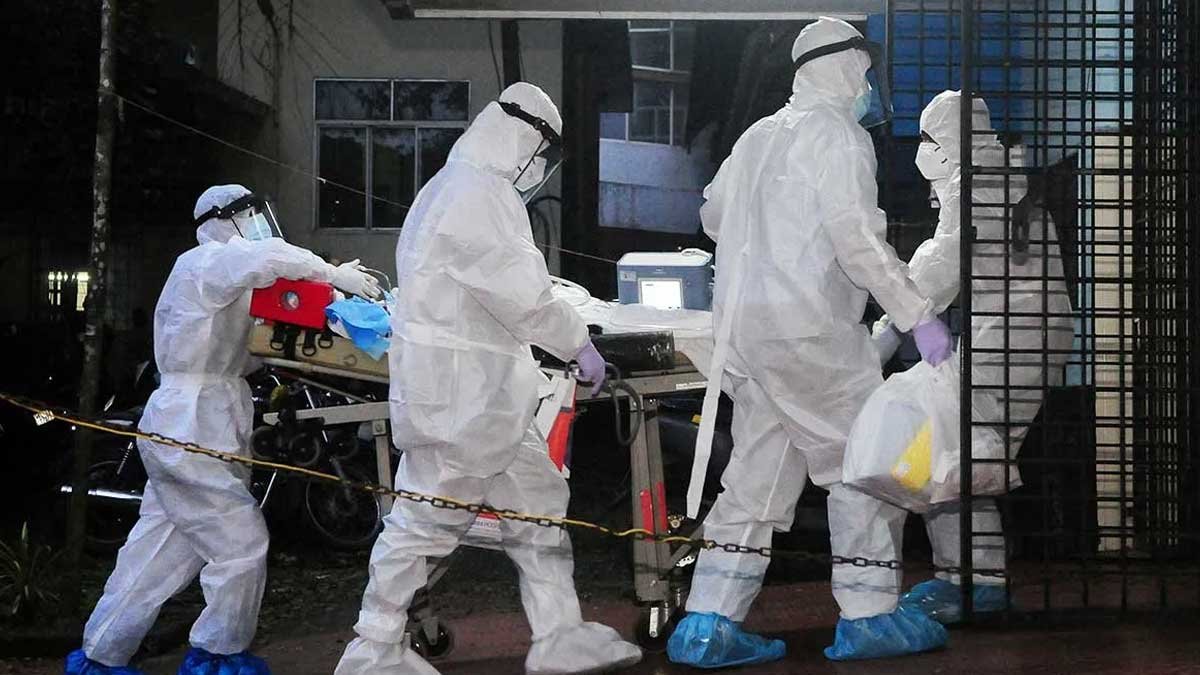New Delhi, 16 June 2025: India has reported 11 COVID-19-related deaths in the past 24 hours, taking the total death toll closer to alarming levels in the ongoing rise of coronavirus infections. According to the latest data released by the Union Ministry of Health and Family Welfare, the country’s active COVID-19 caseload currently stands at 7,264 — a slight dip from the previous day, indicating a consistent but cautious downward trend in new infections. While the fall in active cases may offer a momentary sigh of relief, the rise in daily deaths has once again drawn attention to the evolving nature of the virus and its continued threat to public health, especially among the elderly and those with pre-existing conditions.
Health authorities have reported that the 11 deaths occurred across multiple states. Suggesting that the virus is still circulating in different regions despite vaccination coverage and natural immunity from past infections. Experts believe that while the virus currently appears to have a lower transmission rate than during peak pandemic waves. Isolated outbreaks are still possible and can prove fatal to at-risk populations. The Health Ministry has urged state governments to remain vigilant. Keep hospital infrastructure ready, and ensure the availability of essential supplies such as oxygen, ICU beds, and COVID treatment drugs like antivirals and corticosteroids.
The recent decline in active cases largely attributed to a higher recovery rate, with over 700 COVID patients recovering in the last 24 hours alone. However, health experts caution that recoveries alone should not breed complacency. The presence of new sub-variants with possible immune-evasive characteristics remains a cause for concern. And genomic surveillance teams have tasked with monitoring virus mutations and reporting any abnormalities. With schools, colleges, and offices functioning at full capacity. The risk of rapid transmission remains high if preventive protocols are not followed. Mask use in enclosed and crowded areas, hand hygiene, and vaccination. Including booster doses—continue to be essential measures in keeping the spread under control.
States like Maharashtra, Delhi, Kerala, and Karnataka have recently reported a spike in COVID test positivity rates in select districts. Prompting local health departments to ramp up testing and implement micro-containment strategies where needed. While most infections are reportedly mild or asymptomatic, the increase in fatalities underscores that COVID-19 is far from over. The Health Ministry has advised people experiencing respiratory symptoms to get tested immediately and avoid going to work or school if sick. Additionally, they’ve stressed the importance of reporting all COVID-like symptoms and test results to local health authorities to maintain accurate case data and timely response strategies.
India’s overall recovery rate remains high, and vaccination efforts have helped curb the impact of severe disease. However, public health officials are reminding citizens not to lower their guard. Seasonal flu infections, rising temperatures, and air pollution already placing additional stress on people’s respiratory health. Making it harder to distinguish between COVID-19 and other illnesses. Medical professionals also warn that co-infections. Where a person contracts both COVID and another respiratory virus—can be particularly dangerous and may worsen health outcomes.
In light of the recent fatalities and active case numbers. The central government expected to hold review meetings with state health secretaries and district collectors to ensure readiness in case of a sudden rise in cases. Travel advisories, especially for international arrivals. Are being reviewed periodically, and random airport testing continues in selected cities. While the numbers may not yet indicate a full-fledged wave. The reappearance of COVID-related deaths is a critical reminder that the virus continues to pose health risks. The Health Ministry continues to recommend regular handwashing, the use of face masks in public spaces. Staying updated with vaccination schedules, and avoiding large gatherings as the best ways to protect oneself and others from infection.






